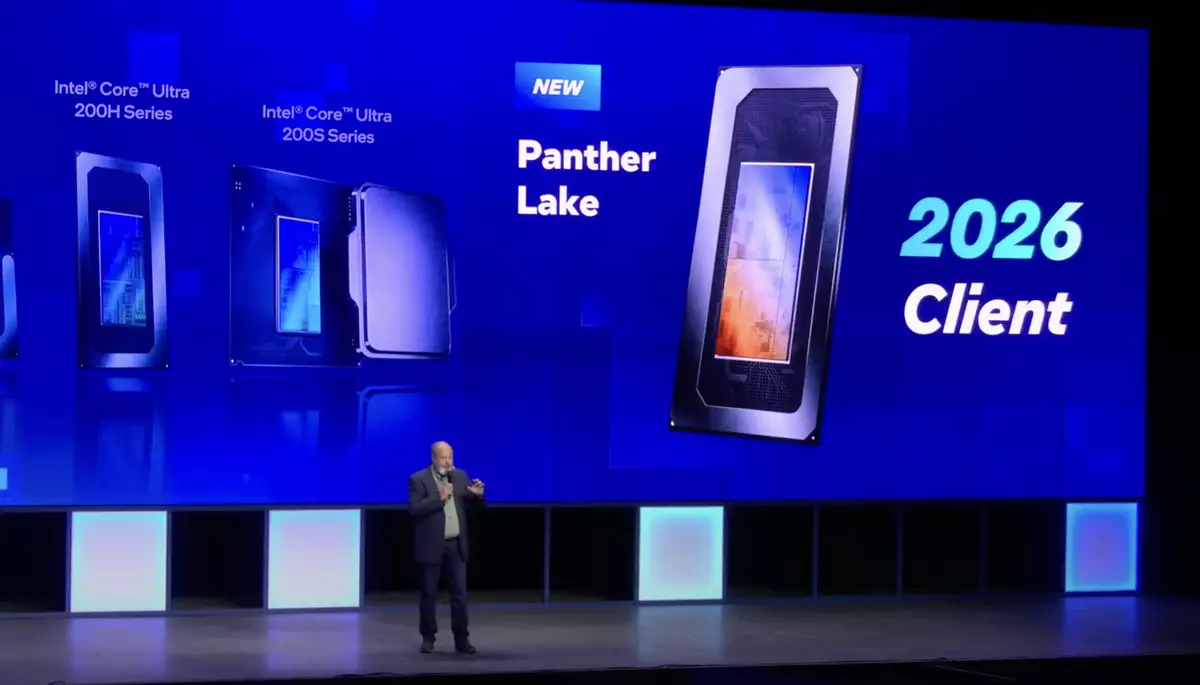Intel, a venerable titan in the semiconductor industry, recently witnessed a rejuvenation under the leadership of new CEO Lip-Bu Tan. His recent presentation at Intel Vision 2025 revealed an update that could have been packed with excitement, yet instead felt more like a cautious whisper in a room filled with anticipation. While it is essential to recognize that change takes time, and fresh leadership often requires a transitional period, the absence of groundbreaking news raises questions about the trajectory Intel is navigating. Panther Lake, the upcoming CPU that consolidates key features from both Lunar Lake and Arrow Lake, has garnered some attention, but the presentation’s lack of substantial innovation was a missed opportunity to solidify confidence in Intel’s advancements.
Breaking Down Panther Lake’s Potential
Jim Johnson, Intel’s head of client computing, made it clear that Panther Lake is set to combine the energy efficiency of the Lunar Lake line while attempting to capture the elevated performance level associated with Arrow Lake. While this sounds promising, enthusiasts and investors alike may perceive it through a lens of skepticism. After all, the effectiveness of these hybrid traits will ultimately depend on execution. With Lunar Lake’s achievements in power efficiency lauded, Panther Lake is expected to cater to the performance-demanding laptop segment—particularly when every ounce of battery conservation can equate to enhanced mobility in modern computing. However, the cryptic timeline presented cannot be overlooked. Johnson indicated production is set for later this year, yet the actual product won’t be on the shelves until 2026 according to the displayed timelines.
Tangled Timelines and Production Delays
The convoluted timeline associated with Panther Lake raises significant flags regarding the execution of Intel’s production strategy. What seems like a straightforward release plan may, in fact, exhibit the classic delays Intel has faced over the years. Starting production in late 2025 does not reignite enthusiasm when considering how long consumers might wait for the tangible benefits of such advancements. Moreover, the potential year-long delay since Intel mentioned their 18A process was to be active by the end of 2024 only deepens the concerns surrounding their operational efficiency. This timeline, depicted in Johnson’s keynote, translates to a narrative that is reflective of earlier missteps in their transition to the 10nm node—a chapter that Intel would rather forget but continues to haunt the company.
The Problem of Yield and New Technologies
A core element compounding Intel’s troubles is the reported difficulties surrounding yield rates for their ambitious upcoming node—18A. The ambition clearly saw the necessity for significant technological advancement, but history shows that lofty expectations can swiftly spiral into unfulfilled promises. While backside power and increased transistor density offer tantalizing prospects, they also come bundled with risks. Just as Intel’s previous 10nm attempts encountered hurdles, leading to an extended trial-and-error phase, 18A must prove itself capable of overcoming similar challenges—or risk falling into the same patterns of dysfunction.
Comparative Landscape: Facing Off Against TSMC
In an industry where competition remains intensely fierce, Intel’s ongoing struggles with technology uptake place it on an uncertain battleground against rivals, notably TSMC. The prospect of facing off against TSMC’s N3 nodes, and the imminent arrival of their N2 nodes, implies that merely catching up won’t suffice. It begs the question: will Panther Lake truly possess the performance edge needed to regain market share? Or are we looking at a scenario where Intel lags, trying to find footing against swiftly advancing competitors? The stakes have never been higher for a company that has long been synonymous with innovation.
While Panther Lake may hold the promise of synergy between power efficiency and performance, the timelines, production forecasts, and competitive landscape shade that promise with uncertainty. As Intel embarks on its road towards reclaiming industry leadership, the challenges ahead are daunting and filled with the echoes of past misadventures.

